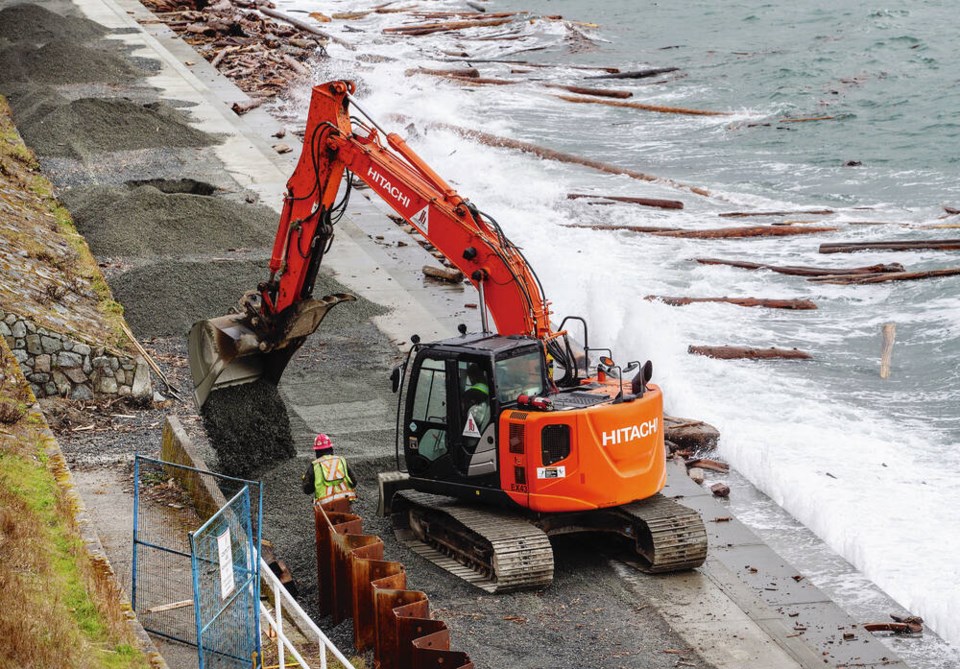Retail trade, hospitals and outpatient health care will be the strongest employments sectors over the next decade in the Vancouver Island-Coast region, says the province’s latest labour market outlook.
Almost 174,700 positions are expected to open up in the next 10 years, including almost 58,500 new positions and another 116,200 positions vacated for reasons such as retirement, said the report released Friday.
The aging workforce may play a role in the expectation that the overall workforce participation rate will slide from 58.8 per cent this year to 56.9 per cent in 2033, tying with the Kootenay for the lowest in the province.
This region’s total employment is at 425,010, the report said. An annual 1.2 per cent increase in jobs is forecast in the coming decade, matching B.C.’s average.
Employment in retail trade (not including cars, online shopping and personal care) is predicted to grow by 1.1 per cent annually in the next 10 years. Total additional employment would come from 10,100 replacement workers and 5,040 new positions. Today 42,650 people work in retail trade in the Vancouver Island-Coast region.
The ambulatory health care (outpatient) workforce, where 19,720 are currently employed, is anticipated to climb by 2.2 per cent a year.
In the next decade, 4,860 new jobs and 5,270 replacement positions are anticipated, the report said.
Work in hospitals is expected to rise by 1.1 per cent annually, moving up the total workforce numbers from 26,500 today.
A total of 2,960 new jobs are predicted, along with 6,380 replacement positions.
Jobs in computer systems design and related services, with 9,410 jobs in the region today, are likely to increase by 4.4 per cent per year, the report said.
That would see 5,200 new positions outstripping the number of replacement jobs of 2,910.
At 19,960 jobs now, work in provincial and territorial public administration is anticipated to climb by 0.9 per cent each year. Of those jobs, 1,800 would be new positions and 6,140 would be replacement jobs.
Bruce Williams, Greater Victoria Chamber of Commerce chief executive, welcomes provincial investment in post-secondary funding and support for education and skilled trades training, but wants to see the amount increased so that more seats would open up for students.
Post-secondary schools say they don’t have the resources to create enough graduates, he said.
Another factor in training people and keeping workers is the high cost of living in the region, Williams said, noting chamber members often say they can’t operate at capacity because of workers leaving for less-costly locations.
Williams would also like to see more focus on recognizing foreign credentials, saying too many people are underemployed, particularly new Canadians.
B.C’s new International Credentials Recognition Act, expected to come into force next summer, is designed to reduce barriers to work in B.C. for internationally trained professionals
Rory Kumala, president of the Vancouver Island Construction Association, said the significance of the construction sector is underrepresented in the labour report. Between 30,000 and 35,000 people are employed on Vancouver Island in construction, which plays a major role in the economy.
The construction sector needs more workers and members are keen to see more young people take up trades, so they can help meet future demand, he said.
The latest labour market survey for British Columbia says 75 per cent of the one million jobs needed over the next decade will require some level of post-secondary education or training.
About 650,000 of the openings will be to replace those leaving the workforce, while the rest will be created through economic growth.
Some of the best job opportunities for those with degrees or diplomas are for nurses, elementary school teachers, software engineers and designers, social and community service workers, early childhood educators and police officers, the report said.
Among skilled trades, there’s a need for cooks, carpenters, building superintendents, hairstylists and heavy equipment operators.
The government has released a new digital tool called Find Your Path to help people gain insight into the education and career planning they need for the job they want.
For the Find Your Path tool, visit: educationplannerbc.ca/find-your-path
— With a file from The Canadian Press



